Mercedes reveals giant 56-inch, AI-enabled 'Hyperscreen' for upcoming electric car
Meet the MBUX Hyperscreen
Mercedes-Benz has officially unveiled its enormous MBUX Hyperscreen, a gigantic 56-inch in-car display unit which stretches from door to door.
While the Hyperscreen is presented as the "biggest screen ever built in Mercedes", it actually features three distinctly separate, high-end displays.
The displays are covered by a single, gently curving piece of glass, the largest freeform Gorilla Glass panel to ever feature in a Mercedes, which the firm claims appears to "float" in the cabin.
The displays are able to communicate not only with each other for seamless operation, but also with two rear-seat displays, creating a multi-seat entertainment system.
It provides drivers (and your passengers) access to your phone, charging information, entertainment features, navigation, connectivity, seat massage settings, social media and more.
Packed beneath the touchscreen are 12 actuators which provide haptic feedback during operation. This generates a sensation similar to pressing a physical button when your finger touches the screen, providing assurance that your input has registered.
We've seen this implemented by a number of other car brands already, and it provides a better transition for those used to manual buttons and dials to an all-touch interface.
Get daily insight, inspiration and deals in your inbox
Sign up for breaking news, reviews, opinion, top tech deals, and more.
- CES 2021: the huge tech-expo goes online only
- New Rolls-Royce Ghost: like nothing else
- Audi e-tron: driving the first all-electric Audi
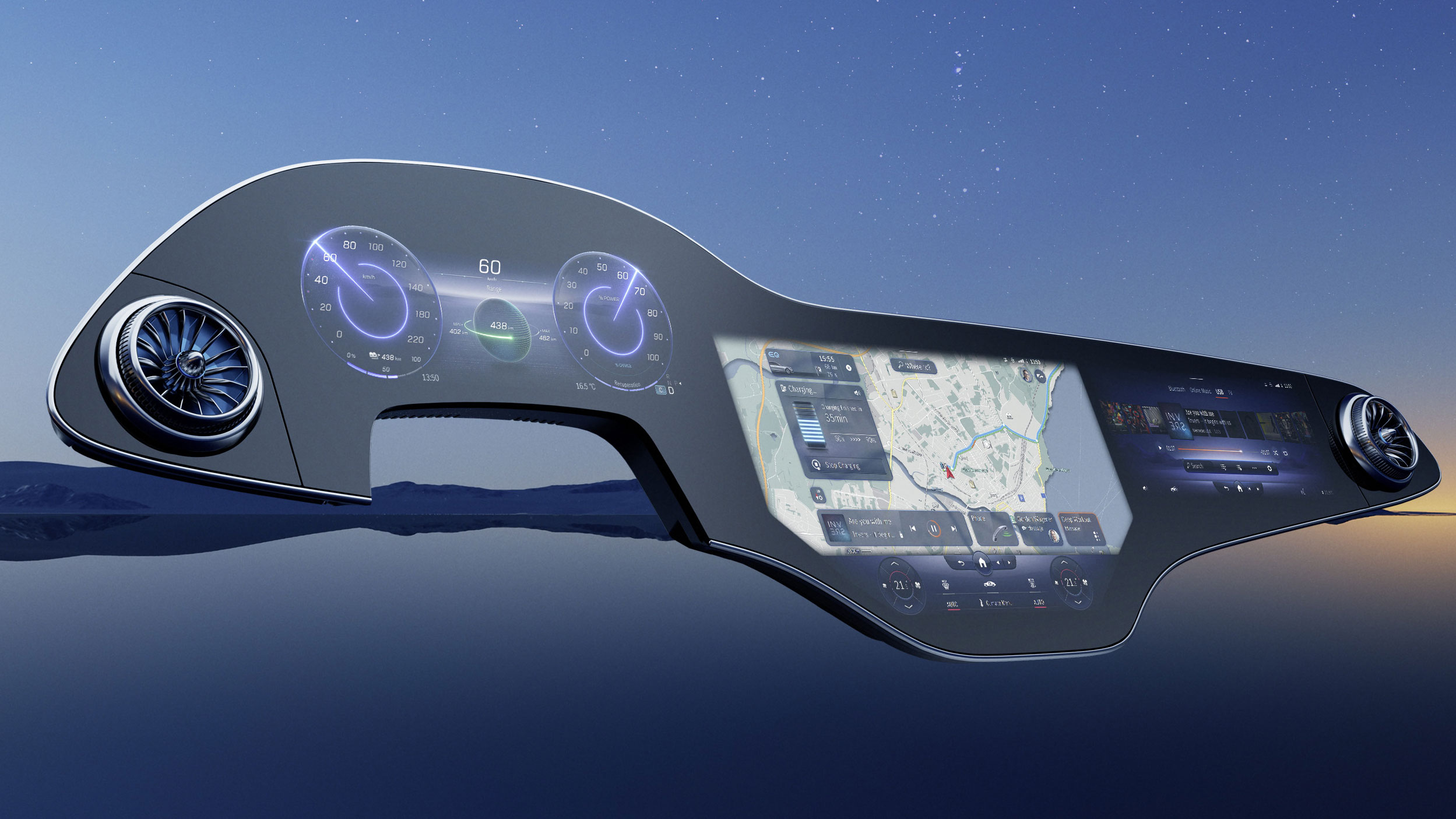
Screens, screens and more screens
The main pOLED display is a 17.7-inch, 3088 x 1728 offering and has the map displayed as default in the majority of the screen real estate. Other functions appear as tiles below the map, with permanent climate controls below them.
There's good news for the front seat passenger, as they get their own 12.3-inch, 2400 x 900 pOLED display.
This 'co-driver display' allows the passenger to help with navigation, control music playback and view vehicle information – but it won't interfere with the driver or their displays. You'll also be able to watch videos, and even live TV, although this option won't be available in every market.
In markets where the front-seat passenger can watch video while the car is on the move, the driver will be monitored for distraction by a camera. If camera detects the driver looking at the passenger's screen, the MBUX will automatically pause playback until the driver is concentrating on the road again.
Front and rear seat passengers (where rear-seat screens are installed) will be able to share content between each other, with the ability to swipe videos to each other's displays so they can all enjoy the same content at once. When stopped, the central 17.7-inch display can also be used to view videos.
The third display, which completes the Hyperscreen setup, is the 12.3-inch, 2400 x 900 instrument cluster LCD display. Digital instrument clusters are becoming more common in new cars, so it's no surprise that it also features here.
It features color themes and different visuals for each of the driving modes, with speed, navigation and G-force graphics just some of the options you'll get to choose from.
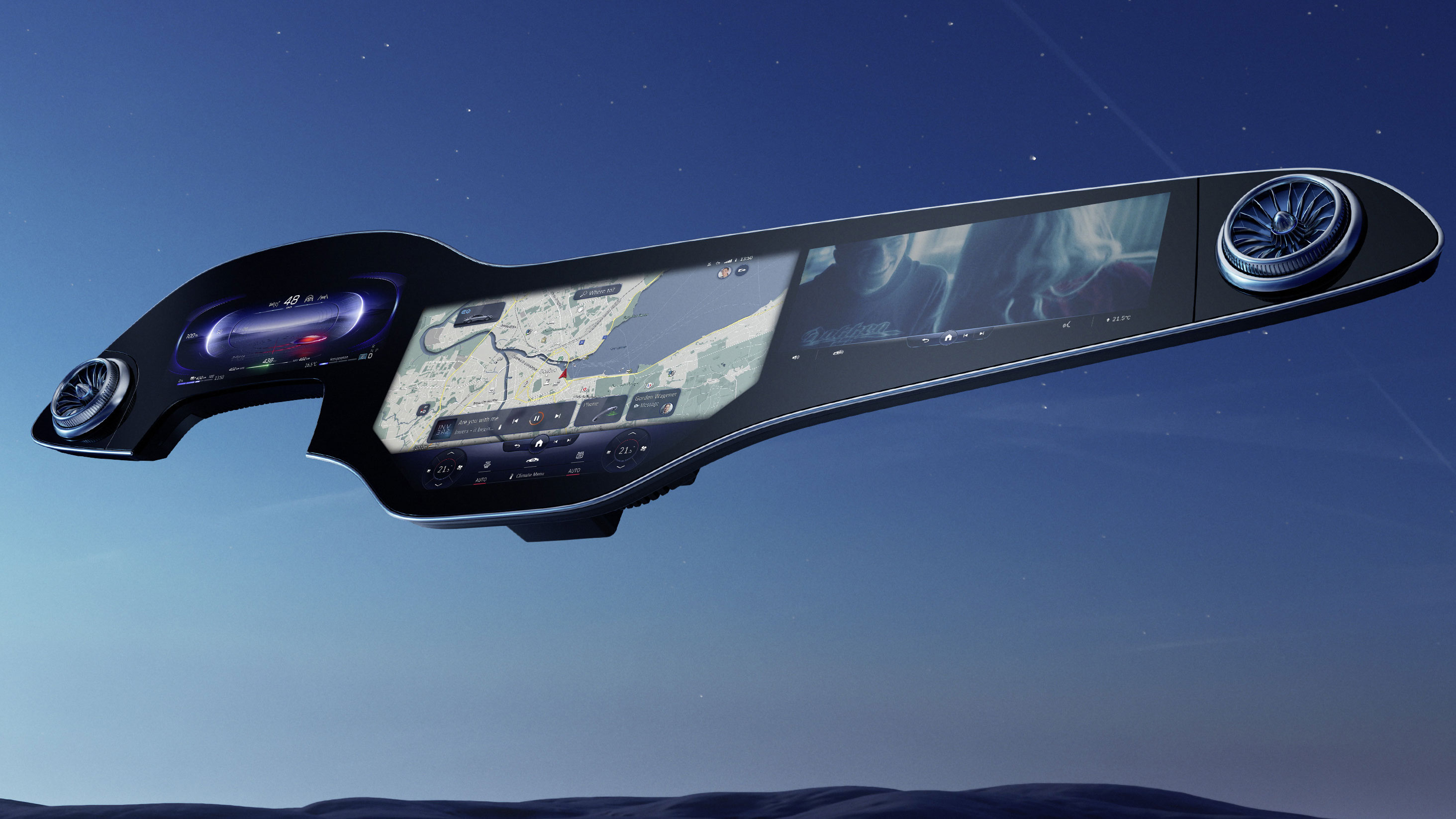
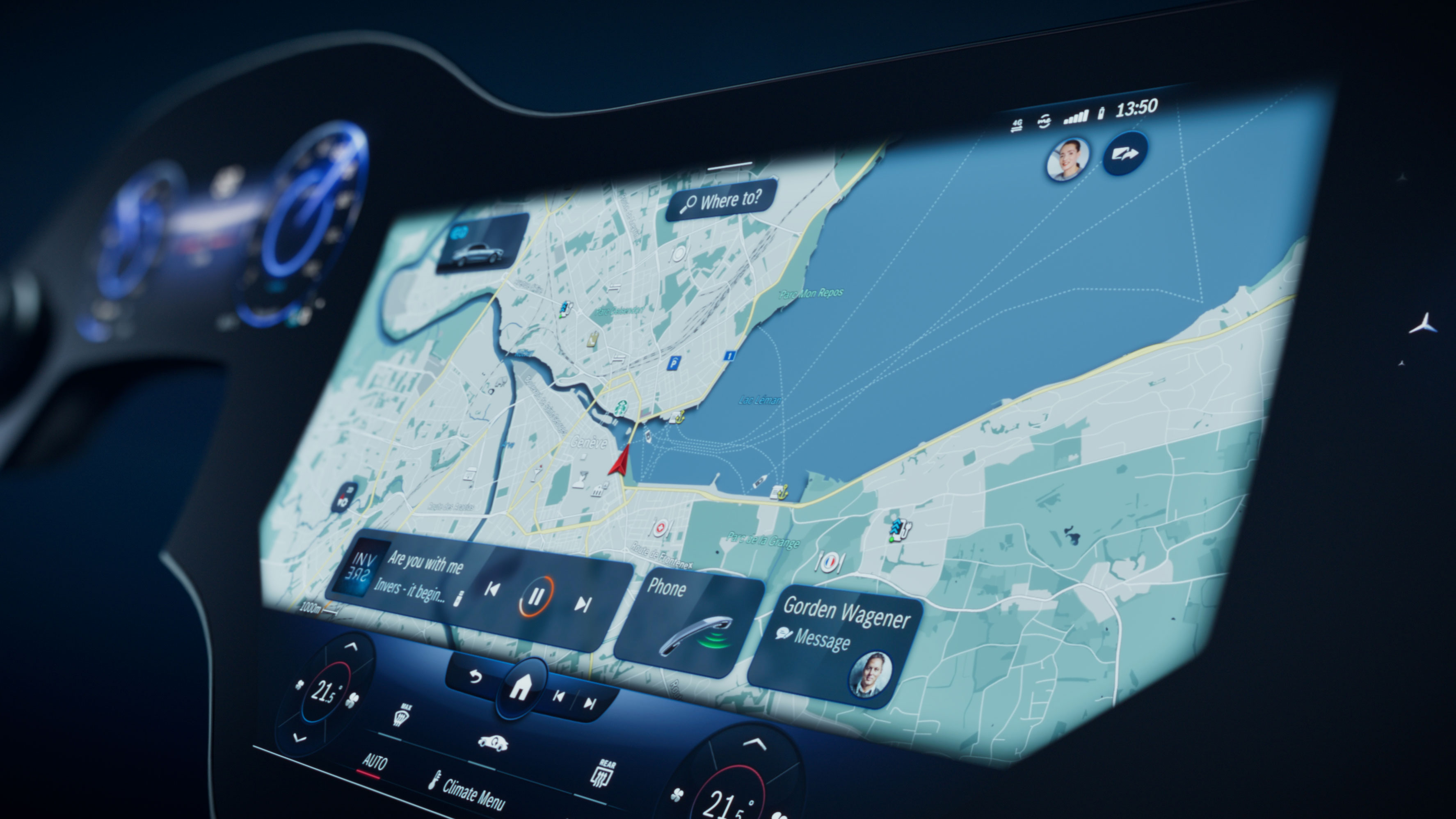
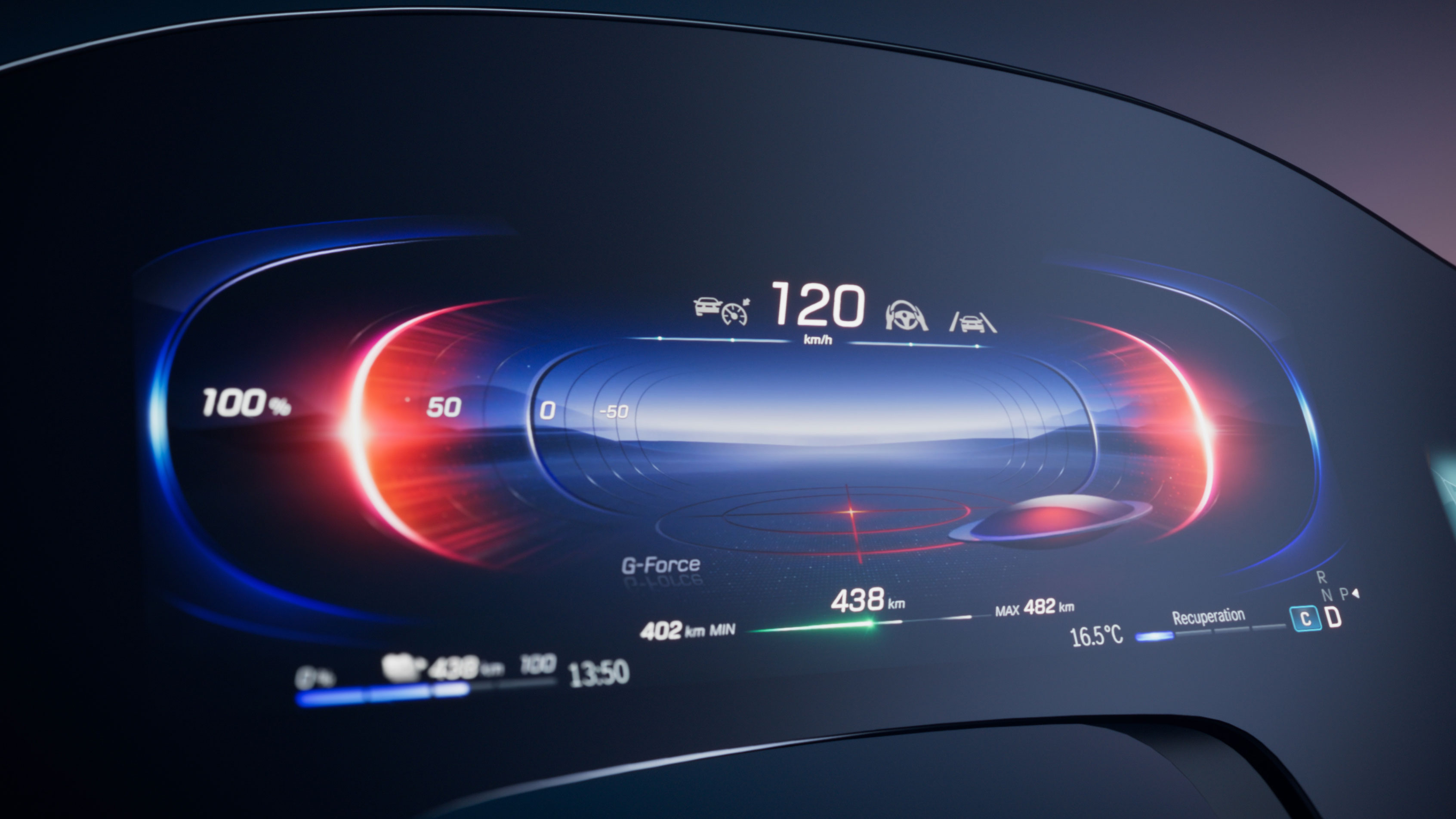

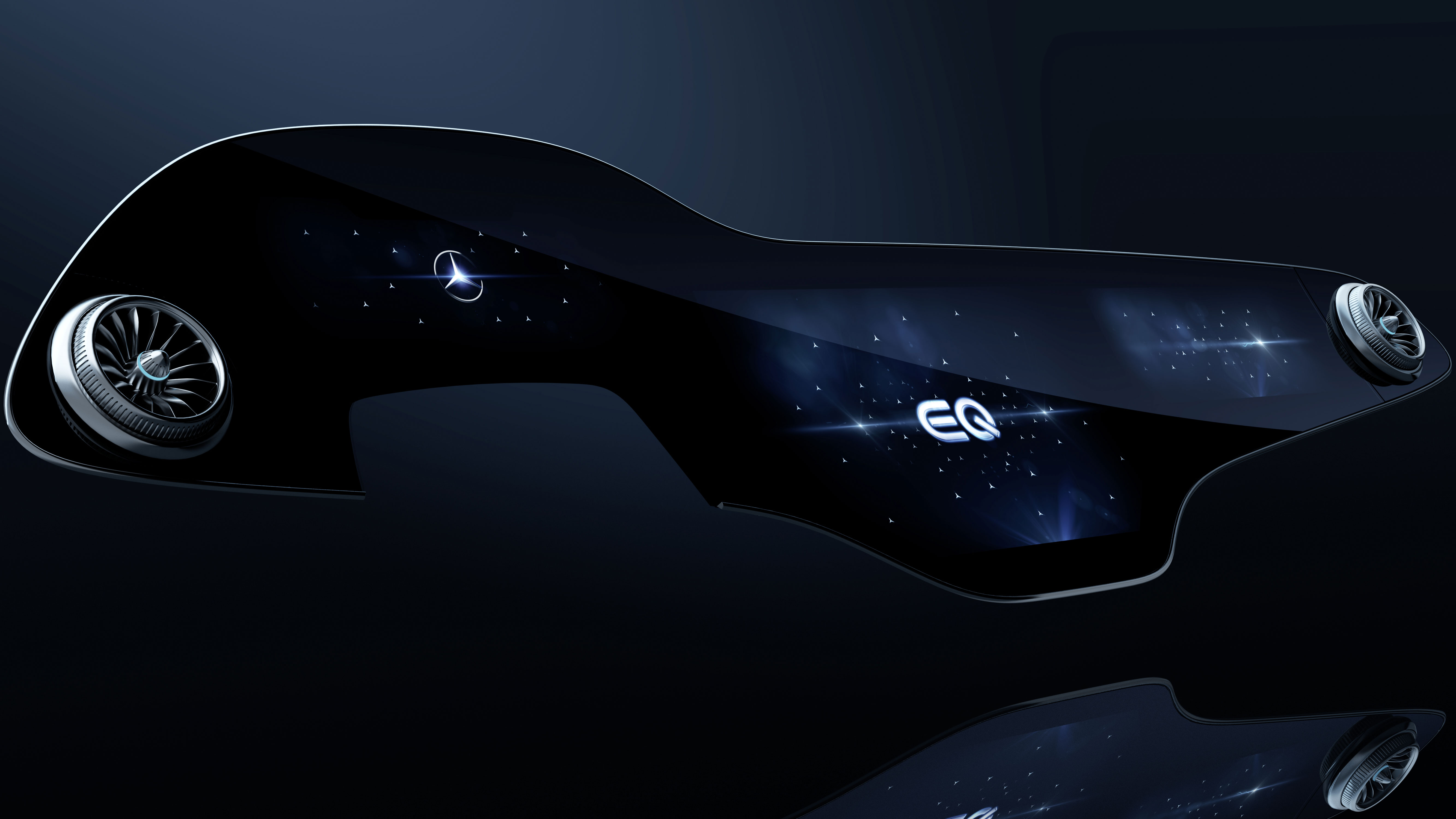
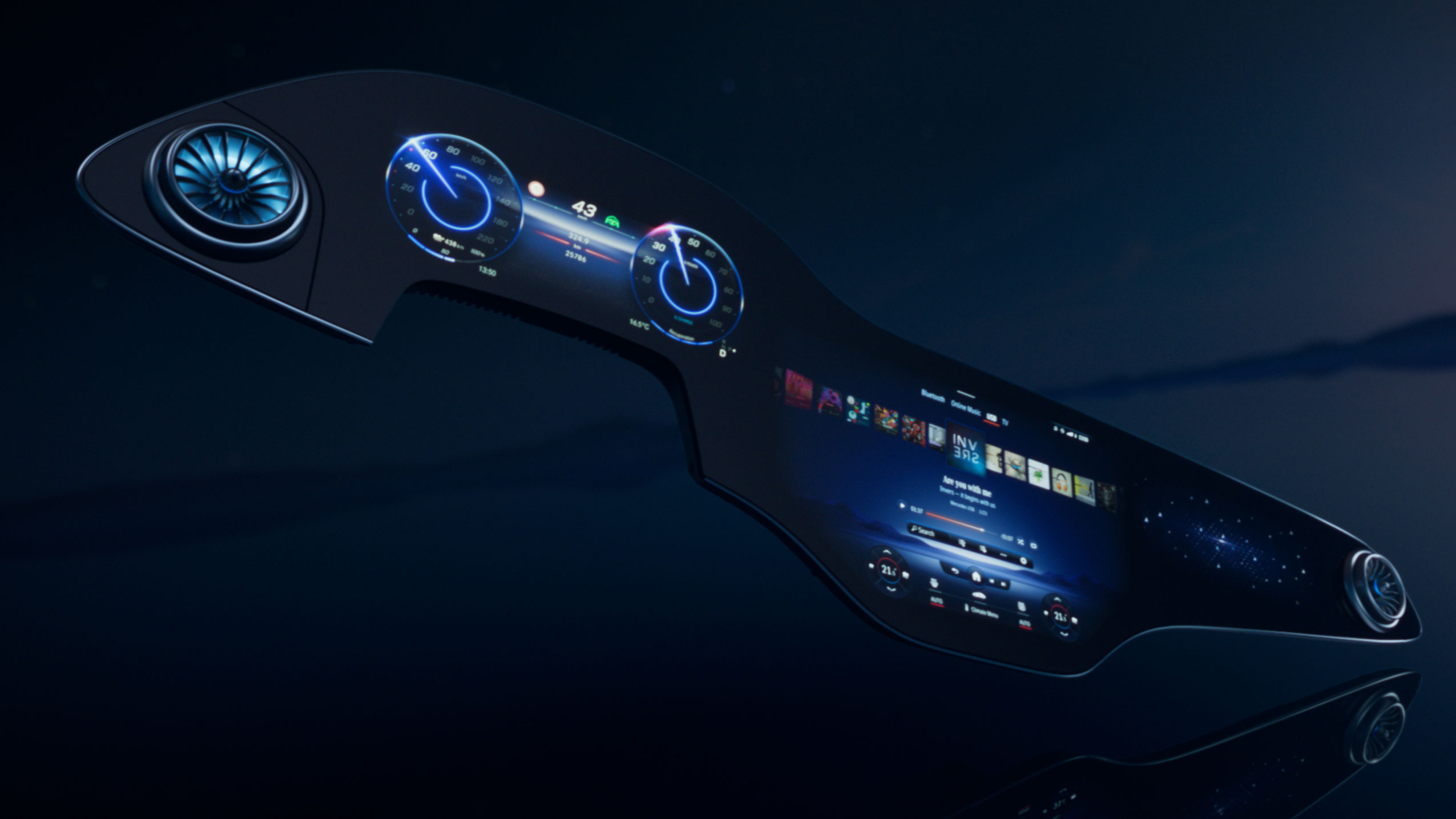

'The most intelligent screen we've put in a car'
Mercedes says the new MBUX system is supremely intuitive, claiming it's "the most intelligent screen we've put in a car", showing you only the controls you need, when you need them.
Its built-in AI learns your usage, and will promote features you use often, or ones you use at a particular time or during certain journeys, to the fore when it predicts you'll want them.
The aim is that you'll never need to search, scroll or get lost in sub-menus, with the system able to always prediction the functions required.
You'll also be able to tailor the system each person's needs, with the ability to create up to seven profiles. There's support for Apple Car Play and Android Auto too, and all this is powered by an 8-core chipset and 24GB of RAM.
This isn't the first time we've seen full-width displays. Chinese EV manufacturer Byton has shown off a full-width, 49-inch display in its M-Byte and K-Byte concept cars (which you still can't actually get yet), while the compact all-electric Honda E features a trio of displays spanning the width of the car.
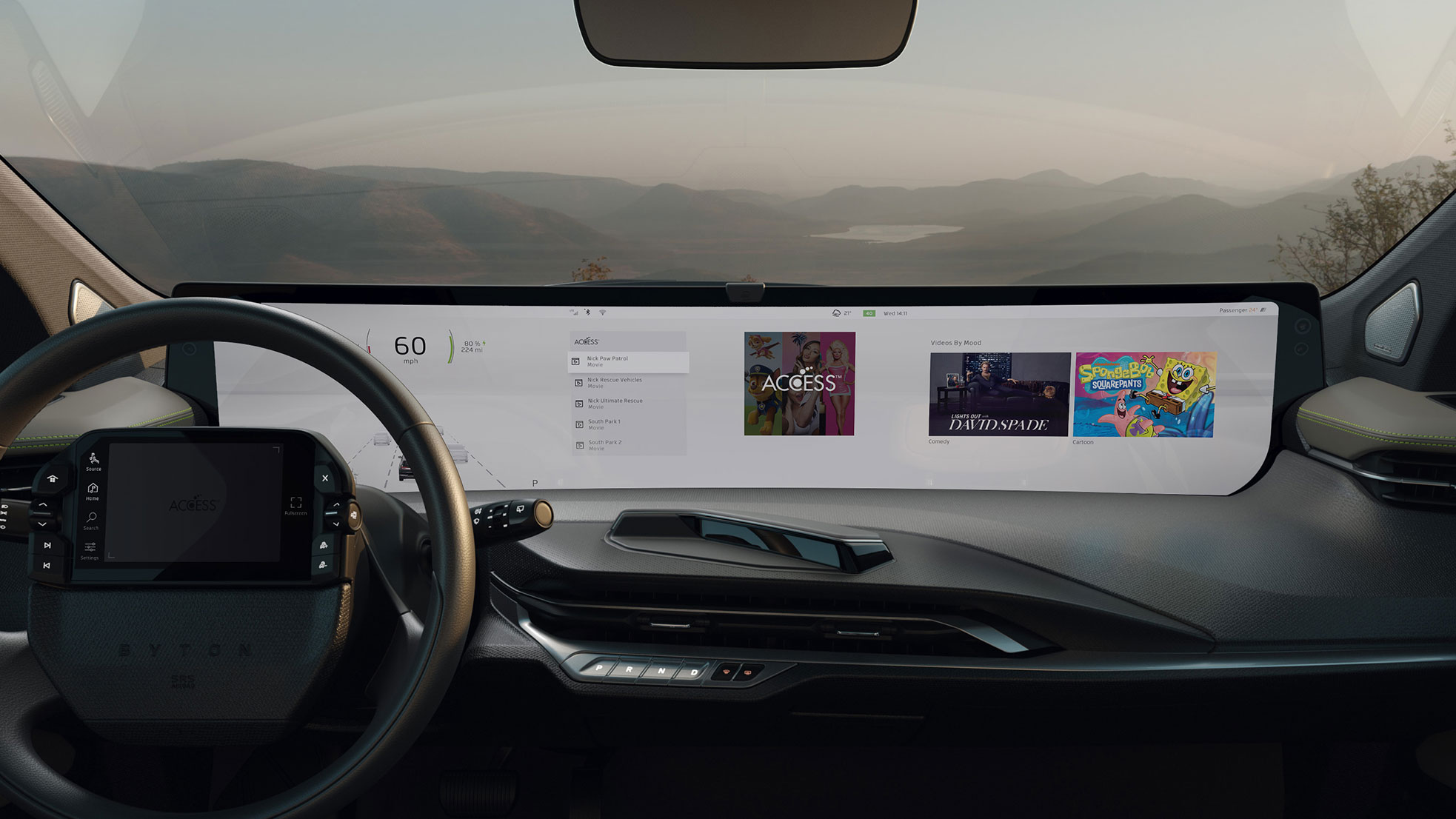
So when can you expect to see the MBUX Hyperscreen make it into a car you can actually buy? Well there's good news here, as it will be this year.
The new EQS, an all-electric, luxury sedan will launch later in 2021, and will be the first Mercedes-Benz to feature the new display.
We don't know too much about the Mercedes EQS just yet, but the firm did reveal that it will have a 700km (around 430 miles) range - which would be significantly better than most EVs currently available.
The EQS is one of four new all-electric vehicles Mercedes is launching this year, with the first being the EQA - a compact, competitive (we assume in price) EV - arriving later this month. We'll also see the EQB and EQE sometime in 2021 as well - although all three are unlikely to offer the MBUX Hyperscreen.
As for the MBUX Hyperscreen itself, Mercedes hinted that it's likely to be a pricey optional extra and that it could well charge for enhanced features either as one-off payments or via a subscription service – although it wouldn't comment further – we'll likely have to wait for the EQS launch to find out more.
What it did confirm is users will get a "wealth of functionality from the word go" via the system, with more features being brought to the system in the future - probably via over-the-air (OTA) updates.
Check out all of TechRadar's CES 2021 coverage. We're remotely covering the online-only show to bring you all the breaking tech news and launches, plus a smattering of hands-on reviews.

TechRadar's former Global Managing Editor, John has been a technology journalist for more than a decade, and over the years has built up a vast knowledge of the tech industry. He’s interviewed CEOs from some of the world’s biggest tech firms, visited their HQs, and appeared on live TV and radio, including Sky News, BBC News, BBC World News, Al Jazeera, LBC, and BBC Radio 4.